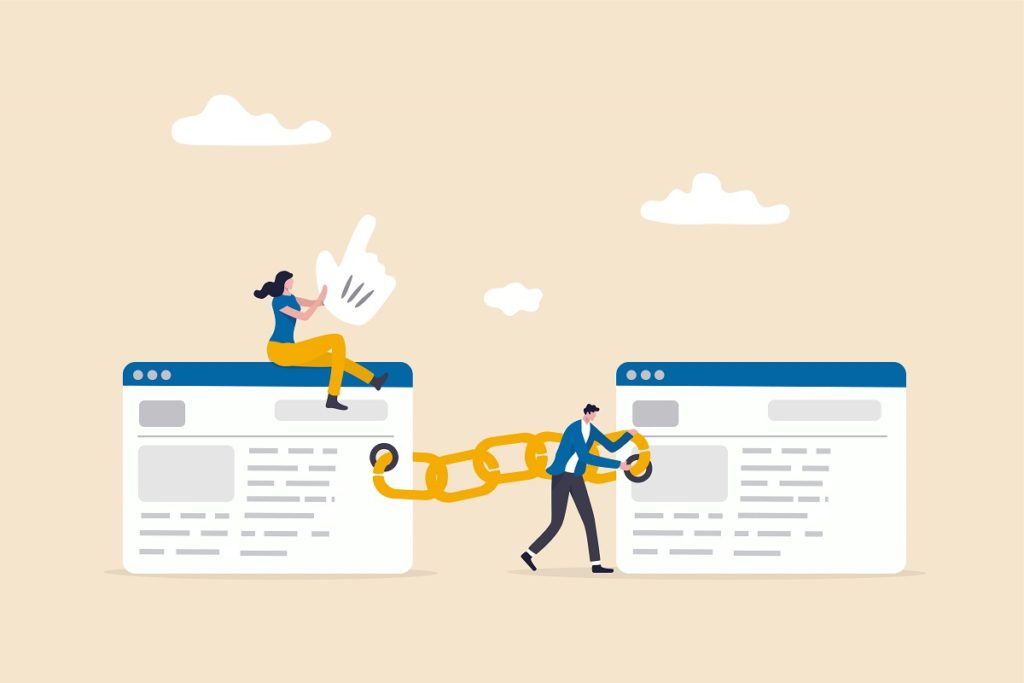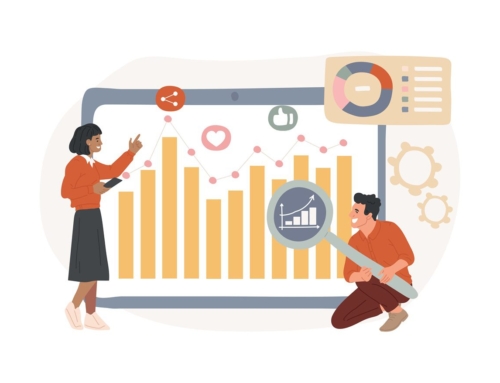The focus of an e-commerce site’s SEO strategy should be to earn backlinks for your category, product or brand pages. This will help drive high-intent traffic to your online store – and sales.

Earning backlinks, or link building, is a critical search engine optimization (SEO) tactic for e-commerce sites. It helps attract high-intent visitors, build trust and drive grow.
Backlinks are links to your site in anchor text on another website. The number of links you have to other high quality websites is one of the factors search engine algorithms use to determine their rankings. The more quality sites your e-commerce site is connected to, the more likely you are to rank high on search engine results pages (SERPs).
That’s because a healthy number of backlinks tells Google and other search engines the content on your site is valuable, credible and relevant to users – a critical ranking factor for Google in particular. Link building also helps search engines crawl your site as they seek out new and updated content to highlight to users.
Fast facts: The latest statistics show the top result on Google has 3.8 times more backlinks than sites in positions 2 through 10.
Benefits of link building for e-commerce sites
- Enhanced domain reputation. Quality backlinks build trust with search engines, which leads to more traffic and customers.
- Stronger business relationships. The outreach involved in link building can help you create opportunities for collaboration with other businesses.
- Decreased bounce rate. Having lots of links will encourage people to spend more time on your site.
- Increased referral traffic. More backlinks lead to more referral traffic, as people have more ways to discover your products.
What to look for when link building
- Credibility: Linking to authoritative, reputable sites is viewed favourably by search engines, which are always filtering out spam and irrelevant content.
- Context: The more the content on a backlink site relates to the content on your site, the more valuable the link becomes as part of your SEO strategy.
- Popularity: A high number of relevant backlinks leads to high organic search engine rankings.
- Fast fact: More than 90 per cent of web pages get no traffic from Google and the top reason is because most pages have fewer than three backlinks or none at all.
Tip: Google Analytics can help you understand how people are finding your content, how long they are spending with content and bounce rates.
Five top link-building techniques for e-commerce businesses
In e-commerce SEO, earning backlinks for category, product or brand pages can help drive sales. But it isn’t easy. Top quality sites prefer to link to content that educates and informs their users versus content that pushes products.
Here are our top link-building techniques to help you meet this challenge and grow:
1. Optimize your product pages
Write robust, clear and persuasive descriptions with relevant keywords on all product pages. Add impactful product images and product videos. Demonstration videos are a great way to help customers experience the product. Post product videos on YouTube – the second largest search engine after its parent company Google – and link back to your product pages.
2. Provide product samples to influencers in your industry
Decide on which category/product you want to highlight. Do a little research to find out which bloggers/influencers have reviewed similar products. This can be as simple as conducting a Google search such as “product + review.” Or research your competitors and see where their products have been reviewed. Reach out to the influencers who will have the most impact with your customers and pitch them on reviewing your product.
Tip: Use a traffic estimator to identify the most influential bloggers in your industry.
3. Make link building part of your integrated content marketing strategy
Develop great content, share it across multiple channels and create an internal linking structure guiding users to specific product pages. High quality content will help search engines find you and attract authoritative backlinks.
Types of content to consider:
- Website content. Create content that is up to date, answers users questions, uses strategic keywords that will resonate with your target audience, includes visuals and features rich snippets.
- Videos. Create shareable videos (live, recorded, immersive) that customers and influencers can post to their social channels.
- Infographics. Easy to understand images and brief statements offer an effective way to educate and inform users – a highly effective SEO technique.
- Curated statistics. Bloggers and journalists are always looking for statistics. Visit government and other credible sites to create a page of interesting statistics, facts and figures that are connected to your business/industry.
- Blogs. If you create your own blogs, be sure to include share buttons to encourage distribution across social channels. If you don’t have a blog, reach out to publications/bloggers that are relevant to your users and pitch a guest post or offer to update an existing blog. In addition to linking to authoritative sites, in some cases you may be able to link directly to product pages on your site.
- Podcast interviews. Look for podcast directories that are relevant to your industry and what you do. Listen to a few and come up with potential topics that will allow you to share your unique and knowledgeable perspective. Connect with the podcast host or producer and provide a personalized and compelling pitch.
4. Tap into unlinked mentions and unattributed brand images
Set up Google Alerts for any mentions of your business’s name, your products or team members. You will receive a notification when you’re mentioned online. Check the articles and sites where you’re mentioned and if there is no link to your website, request a link from the site owner.
Find websites using your images without attribution. This is called reverse image building. Start by looking through your site and choosing original photos, infographics or other high quality unique images. Use Google Images or TinEye to find websites that are using these images. If they don’t include a link to your site or proper attribution, contact the site owner.
5. Leverage resource pages
Resource web pages list resources and content connected to a specific industry or topic. Conduct a Google search to find a resource page related to your niche. You can use search terms that include your target keyword + “resources” or “helpful links,” for example. Identify your relevant link-worthy content and reach out to the site’s owner or editor and pitch them on why your content would be a valuable addition.
Combining strategic outreach and content-led link building techniques can help you secure relevant and credible backlinks for your category, product and brand pages – essential to improving search engine visibility and driving sales.

